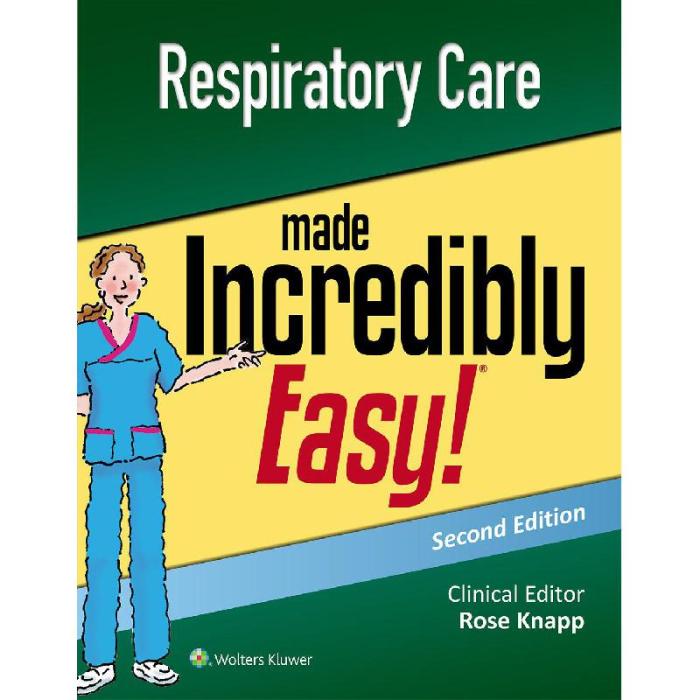Pharmacology made easy 4.0 the respiratory system – Embark on a captivating journey into Pharmacology Made Easy 4.0: The Respiratory System, where we delve into the intricate workings of our breath, revealing the secrets of maintaining homeostasis and combating respiratory ailments. This comprehensive guide promises an immersive experience, unraveling the complexities of respiratory pharmacology with unparalleled clarity.
Our exploration begins with an overview of the respiratory system’s anatomy and physiology, laying the foundation for understanding its vital role in sustaining life. We will then venture into the realm of respiratory pharmacology, dissecting the mechanisms of action and clinical applications of various drug classes employed in treating respiratory conditions.
1. The Respiratory System
An Overview

The respiratory system is responsible for gas exchange between the body and the environment. It consists of the lungs, airways, and respiratory muscles. The lungs are the primary organs of gas exchange, and they are made up of millions of tiny air sacs called alveoli.
The airways are a series of tubes that connect the lungs to the outside environment, and they are lined with cilia that help to move mucus and foreign particles out of the lungs. The respiratory muscles are responsible for moving air in and out of the lungs.
Functions of the Respiratory System
- Gas exchange: The respiratory system exchanges oxygen and carbon dioxide between the body and the environment.
- Regulation of pH: The respiratory system helps to regulate the pH of the blood by excreting carbon dioxide.
- Thermoregulation: The respiratory system helps to regulate body temperature by evaporating water from the lungs.
- Voice production: The respiratory system is used to produce sound.
- Protection: The respiratory system helps to protect the body from inhaled foreign particles.
Importance of the Respiratory System in Maintaining Homeostasis, Pharmacology made easy 4.0 the respiratory system
The respiratory system is essential for maintaining homeostasis in the body. It provides the body with the oxygen it needs to function, and it removes the carbon dioxide that is produced as a waste product of metabolism. The respiratory system also helps to regulate the pH of the blood, and it plays a role in thermoregulation.
Without the respiratory system, the body would not be able to survive.
2. Pharmacology of the Respiratory System

There are a variety of different classes of drugs that are used to treat respiratory conditions. These drugs include bronchodilators, corticosteroids, mucolytics, and antibiotics. Bronchodilators are used to open up the airways, corticosteroids are used to reduce inflammation, mucolytics are used to thin mucus, and antibiotics are used to treat infections.
Mechanisms of Action of Respiratory Drugs
The mechanisms of action of respiratory drugs vary depending on the class of drug. Bronchodilators work by relaxing the muscles in the airways, which allows the airways to open up. Corticosteroids work by reducing inflammation in the airways. Mucolytics work by breaking down mucus, which makes it easier to cough up.
Antibiotics work by killing bacteria that cause infections.
Clinical Uses of Respiratory Drugs
Respiratory drugs are used to treat a variety of different respiratory conditions. These conditions include asthma, COPD, and pneumonia. Asthma is a chronic condition that causes inflammation and narrowing of the airways. COPD is a chronic condition that causes damage to the lungs.
Pneumonia is an infection of the lungs.
3. Respiratory Conditions and their Management

There are a variety of different respiratory conditions that can affect people of all ages. Some of the most common respiratory conditions include asthma, COPD, and pneumonia.
Asthma
Asthma is a chronic condition that causes inflammation and narrowing of the airways. Symptoms of asthma include wheezing, coughing, shortness of breath, and chest tightness. Asthma can be triggered by a variety of factors, including allergens, exercise, and cold air.
COPD
COPD is a chronic condition that causes damage to the lungs. Symptoms of COPD include shortness of breath, wheezing, coughing, and fatigue. COPD is caused by a variety of factors, including smoking, air pollution, and occupational exposure to dust and fumes.
Pneumonia
Pneumonia is an infection of the lungs. Symptoms of pneumonia include fever, chills, cough, shortness of breath, and chest pain. Pneumonia can be caused by a variety of factors, including bacteria, viruses, and fungi.
Role of Pharmacology in Managing Respiratory Conditions
Pharmacology plays an important role in the management of respiratory conditions. There are a variety of different drugs that can be used to treat respiratory conditions, including bronchodilators, corticosteroids, mucolytics, and antibiotics.
FAQ: Pharmacology Made Easy 4.0 The Respiratory System
What is the primary function of the respiratory system?
Gas exchange, facilitating the intake of oxygen and elimination of carbon dioxide.
How do inhaled medications work in respiratory therapy?
They deliver drugs directly to the airways, maximizing local effects and minimizing systemic side effects.
What is the role of extracorporeal membrane oxygenation (ECMO)?
It provides temporary respiratory support by oxygenating blood outside the body, allowing the lungs to rest and recover.